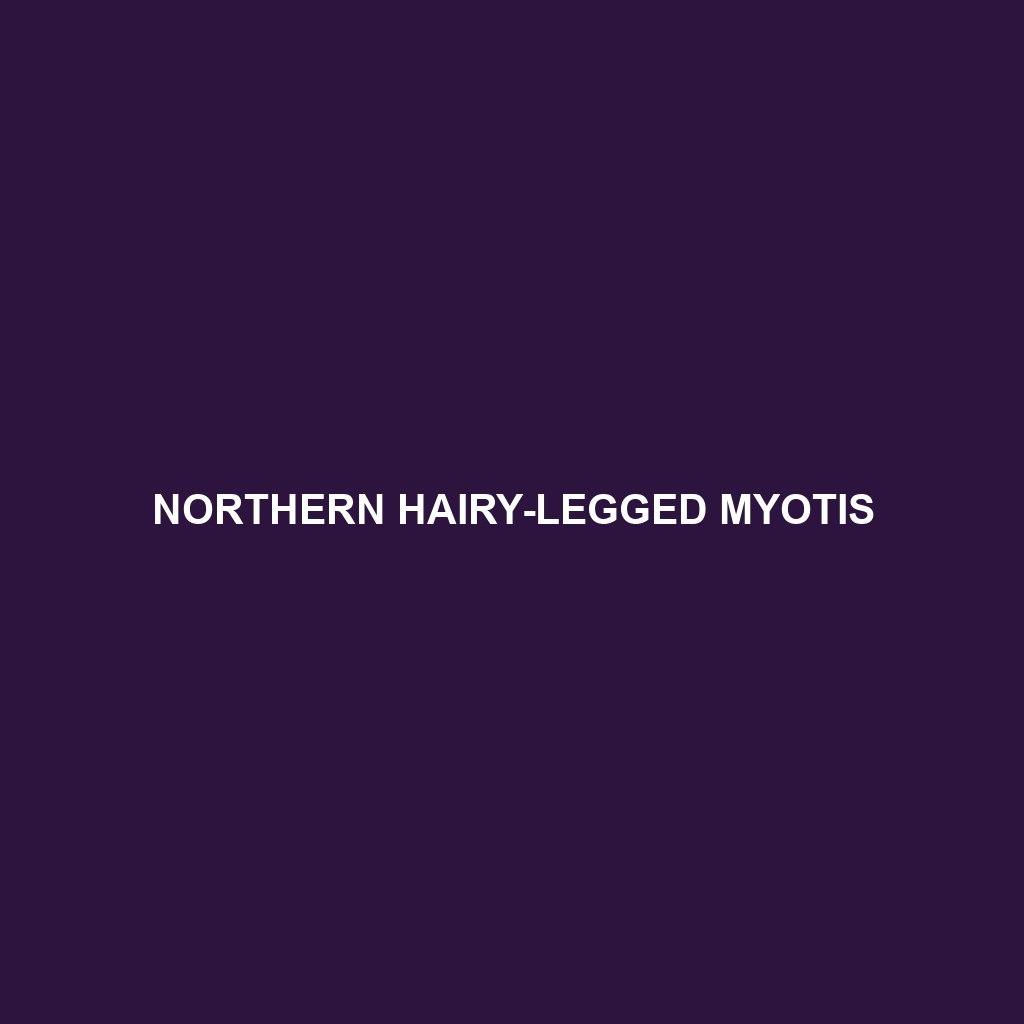Common Name: Northern Hairy-legged Myotis
Scientific Name: Myotis septentrionalis
Habitat:
The Northern Hairy-legged Myotis is primarily found in eastern North America, particularly in regions with dense forests and near water sources. Their habitat spans from the southern parts of Canada to the northeastern United States, thriving in moist woodlands, caves, and along river corridors. This species typically prefers temperate deciduous forests where they can find ample roosting sites and abundant insect prey.
Physical Characteristics:
Adult Northern Hairy-legged Myotis typically weigh between 6 to 10 grams and have a wingspan that ranges from 23 to 28 cm. Their fur is characterized by a distinctive dark brown or grayish coloration with lighter underfur, which provides excellent camouflage against tree bark. One notable feature is their elongated, hairy legs, which give them their name and are thought to aid in their flight and foraging behavior. Their ears are relatively large and pointed, allowing for exceptional hearing capabilities.
Behavior:
Northern Hairy-legged Myotis are known for their nocturnal habits, emerging at dusk to hunt for food. They exhibit typical bat behaviors such as echolocation for navigation and hunting. This species is also known for its social behavior, often roosting in small groups. During the summer months, they prefer to roost in trees or under loose bark, and during colder seasons, they may hibernate in caves or abandoned mines.
Diet:
This species primarily feeds on a diverse array of flying insects, including moths, beetles, and other nocturnal insects. Northern Hairy-legged Myotis utilize their echolocation abilities to catch prey in mid-air. Their diet can vary seasonally based on the availability of insects, making them important for natural pest control in their respective ecosystems.
Reproduction:
The reproductive habits of the Northern Hairy-legged Myotis typically involve a breeding season in the late summer, followed by a gestation period of approximately 50 to 60 days. Females usually give birth to one pup each summer, which remains with the mother until it is capable of flying and hunting independently. Maternal care is crucial during the early stages of the pup’s life, especially in terms of foraging and thermoregulation.
Conservation Status:
The Northern Hairy-legged Myotis is currently listed as endangered due to habitat loss, especially from deforestation and human encroachment. Additionally, the impacts of white-nose syndrome, a fungal disease affecting bats, have significantly contributed to population declines. Conservation efforts are essential to protect their remaining habitats and mitigate threats to their survival.
Interesting Facts:
One fascinating aspect of the Northern Hairy-legged Myotis is its unique flight style. Unlike many other bat species, they have a slower, more maneuverable flight pattern that allows them to expertly navigate through dense vegetation. Also, they play a critical role in maintaining the balance of the ecosystems they inhabit by controlling insect populations.
Role in Ecosystem:
The Northern Hairy-legged Myotis plays a vital role in its ecosystem as an insectivore. By consuming large quantities of mosquitoes and other pest insects, they contribute to the ecological balance and limit pest populations that can affect agriculture and human populations. Additionally, their presence indicates a healthy environment, making them essential indicators of ecosystem health.
